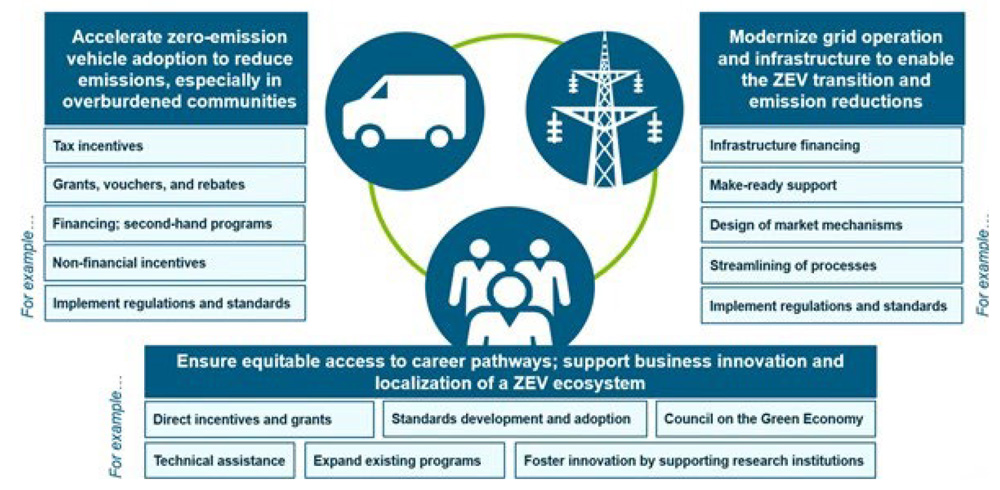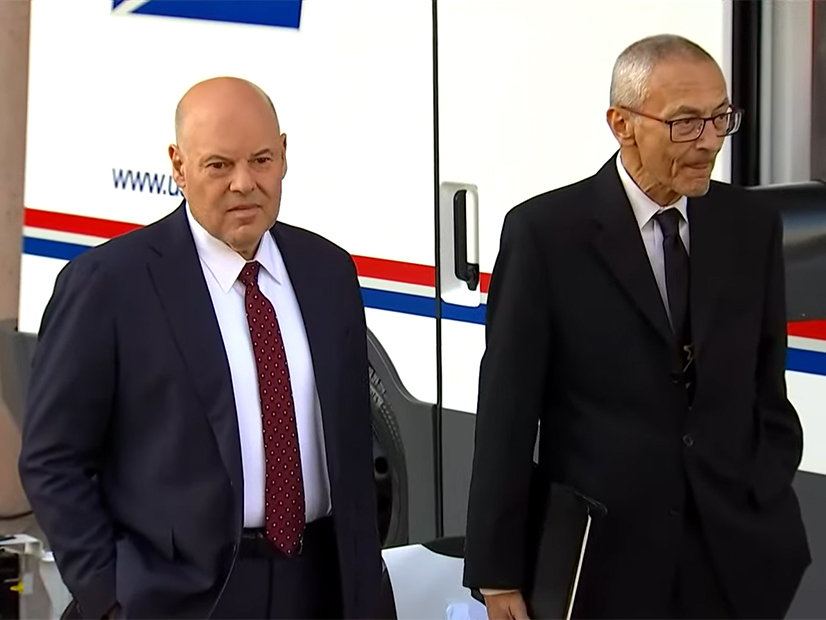FERC last week rejected a proposed settlement agreement intended to resolve a longstanding appeals court dispute over how to implement Order 1000 in the WestConnect planning region (ER22-1105).
WestConnect covers parts of Arizona, California, Colorado, Nebraska, Nevada, New Mexico, South Dakota, Texas and Wyoming. It includes FERC-jurisdictional public utilities that are subject to the requirements of Order 1000 as well as several nonpublic utilities not subject to the order.
Order 1000, which FERC issued in 2011, requires jurisdictional utilities to participate in regional transmission planning and to develop a process for allocating costs for projects selected through the planning process.
The settlement agreement rejected by FERC on Thursday was negotiated by nine WestConnect public utilities, including Arizona Public Service; Black Hills Colorado; Black Hills Power; Cheyenne Light, Fuel and Power; El Paso Electric; Public Service Company of Colorado; Public Service Company of New Mexico; Tucson Electric Power; and UNS Electric.
The dispute at issue in the settlement agreement originated in 2012, when WestConnect public utility transmission providers submitted a series of compliance filings in response to Order 1000. FERC rejected several filings related to how the planning group would handle regional cost allocation, but it accepted a proposed participation framework that allowed non-jurisdictional utilities to choose to participate in the WestConnect planning region as either enrolled members subject to binding regional cost allocation or as “coordinating transmission owners” (CTOs) not subject to allocation.
In 2016, the 5th U.S. Circuit Court of Appeals vacated FERC’s decision to accept that framework, concluding that the commission had failed to provide a reasoned explanation for doing so.
The commission provided its explanation in an order on remand, saying that, after considering alternatives, it continued to believe the approved framework could “ensure just and reasonable rates while taking into account the uniquely integrated nature of the transmission systems of public and nonpublic utility transmission providers in WestConnect.” It also explained that nonpublic utilities in the region would be incentivized to participate in cost allocation because projects from which they would receive benefits would be less likely to advance without their participation.
In December 2017, the commission denied a request by the WestConnect utilities to rehear the order on remand. The utilities, contending that the original issues had not been resolved, then petitioned the 5th Circuit, where their appeal is still pending, having been subject to a stay until Tuesday.
New Process
Thursday’s ruling dealt with a proposal by the WestConnect public utilities to resolve the appeals court case by establishing a new framework that seeks to address concerns about free-ridership by nonpublic utilities, which the parties to the agreement believe is at the heart of the 5th Circuit case.
The proposal outlines a process by which nonpublic utilities can opt in and contractually bind themselves to regional cost allocation for projects from which they receive benefits. The plan would allow a nonpublic utility to vote on a project after opting in to cost allocation. It would also include “processes and protections” to ensure that more than one WestConnect public utility would benefit from selected projects and seeks to clarify through “defined criteria” the types of projects that are eligible for regional cost allocation.
Under the proposed plan, if the regional transmission planning process identifies a transmission need for more than one enrolled member, WestConnect will solicit proposals to address the need. The WestConnect Planning Management Committee (PMC) would then develop a comprehensive list of solutions, with each being analyzed to determine whether a CTO is a beneficiary. Any benefiting CTOs could then opt in as a “cost-bound” beneficiary.
Thereafter, any cost-bound beneficiaries for projects on the comprehensive list could vote to decide which of the projects move to a short list of potential solutions.
“The Planning Management Committee then evaluates all the transmission projects on the short list under regional cost allocation criteria to determine if each project is eligible for selection in the regional transmission plan for purposes of cost allocation,” the commission explained. Projects that meet the criteria then move to final consideration by the PMC.
The proposal also stipulates that if one or more CTOs identified as beneficiaries do not opt to become cost-bound entities for a project, but two or more enrolled transmission providers in at least two balancing authority areas are also identified as beneficiaries, then those remaining beneficiaries may unanimously vote to either allow the project to advance through the planning process, choose an alternative or request the PMC convene a new solicitation.
Inconsistent with Order 1000
In rejecting the proposal Thursday, FERC noted that a late-filed protest by LS Power obligated the commission to consider the agreement to be a contested settlement, making it subject to review under the approach outlined in FERC’s Trailblazer decision. Citing that precedent, the commission said it could not find the “overall package” in the agreement to be just and reasonable.
The commission noted that WestConnect’s current process allows a nonpublic utility to participate in the transmission planning process as a CTO without being bound to cost allocation for a selected project. However, if the CTO finds that it would benefit from a project, it can voluntarily agree to accept its share of the costs. If the CTO does not agree to accept cost allocation, the PMC reruns the cost-benefit analysis for the project after removing the benefits the CTO would have received. If the project continues to meet the required cost-benefit analysis, it remains eligible for regional cost allocation.
But in the settlement agreement’s revised process, the commission explained, the decision by a beneficiary CTO not to opt into cost allocation for a transmission project means the project cannot move ahead without unanimous approval by the remaining beneficiaries.
“Instead, the remaining beneficiaries can identify an alternate transmission project (either from an existing list or newly proposed), but if the alternate project provides benefits to any coordinating transmission owner or enrolled transmission owner that was not identified as a beneficiary of the original transmission project, the entire process begins again,” the commission wrote. “This proposed process makes it highly unlikely for a transmission project to move forward if any potential coordinating transmission owner beneficiary does not agree to become cost-bound, regardless of the potential project benefits.”
The commission also found that the proposed criteria for determining whether a project is eligible for regional cost allocation was inconsistent with the intent of Order 1000.
The commission first rejected the requirement that an eligible project must physically interconnect one or more transmission providers in more than one BAA.
“We find that this criterion is inconsistent with the requirements of Order No. 1000 because, given the large size of several BAAs within the WestConnect transmission planning region, this criterion would preclude from consideration transmission projects (including those of significant size and scope) located within a single BAA that could more efficiently or cost-effectively address the needs of multiple transmission providers,” the commission wrote.
The commission also rejected another provision in the agreement that would require that cost-bound beneficiaries must receive 90% or more of the total benefits for a project in order for the project to be eligible for regional cost allocation. FERC pointed out that the provision was similar to an earlier WestConnect proposal the commission had already rejected.
“The commission rejected this requirement because it could eliminate from consideration for selection in the regional transmission plan for purposes of cost allocation transmission projects that, even after accounting for any cost shift to the remaining beneficiaries, are the more efficient or cost-effective transmission solution for remaining beneficiaries compared to other alternatives,” FERC said.
The commission also found fault with the agreement’s requirement that a supermajority of 80% of cost-bound beneficiaries must vote in favor of making a project eligible for regional cost allocation, which proponents said was consistent with NYISO’s policy.
The WestConnect proposal omitted two provisions included in NYISO’s process, the commission noted, including requirements that a beneficiary of a project that votes against it provide a written explanation for its rejection, and that NYISO submit an informational report to FERC detailing the vote.
“Without such requirements, we are concerned that beneficial transmission projects could be eliminated from consideration without explanation or justification,” the commission said, adding that the NYISO supermajority voting requirement applies only to economic transmission facilities.
“Altogether, we find that the proposed process under the settlement agreement would impose significant restrictions on the pool of transmission projects that could be considered as more efficient or cost-effective transmission solutions for potential selection in the regional transmission plan for purposes of cost allocation, even in situations where those projects would provide significant benefits to public utility transmission providers in WestConnect that outweigh their costs,” the commission wrote.

